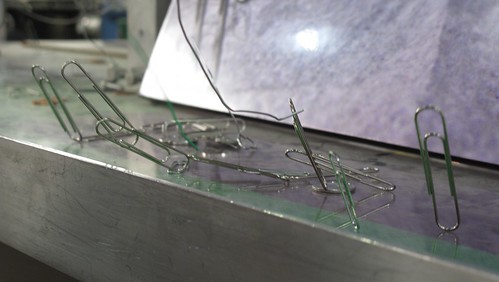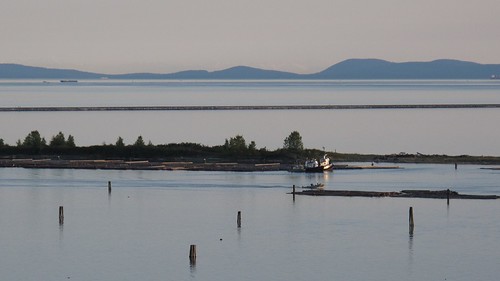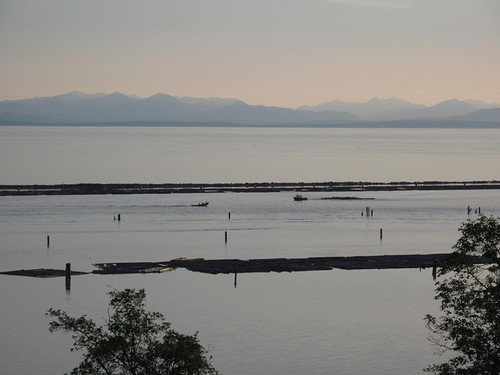Last Sunday—yes, I’m just getting around to blogging about it—I went on my third tour of TRIUMF. Fortunately indoor vball season’s over, and grass only starts next month, so I was free to bask in SCIENCE!
I already knew how it was supposed to go, but it was good to go over the basics: a scale model of the installation, a broad overview of what TRIUMF does, going through the offices where we looked at old pictures of the cyclotron’s construction, and peeked at the control room. The Starship Enterprise hanging from the ceiling was a nice touch, though it was a little spoiled by one of the monitors showing Wheel of Fortune. Well, they gotta kill brain cells somehow, right?
The magic starts in the ion creation chamber, where hydrogem atoms are bombarded with electrons; the negative / positive ions are separated by the chamber, with the positive ones (I think) repelled from the chamber walls and funnelled towards the cyclotron. Though my pictures don’t show it (the apparatus was in a very crowded room), the Ion Source has very smooth metallic walls with rounded corner, very old-school. It’s not to look pretty, though: sharp corners of any kind would distort the electrical field around the walls, leading to arcs and sparking, and nobody wants that.
Then, the cyclotron itself. Of course it’s covered in meters of concrete so we outsiders couldn’t look at the actual machinery, but there was still some pretty cool stuff to play with. Mostly, the paperclips. Though the concrete protects us from the radiation, there’s still a bit of a magnetic field around, enough to make paperclips stand on end.
Then we moved on to the projects: what does TRIUMF do with all these particles?
First, they produce medical isotopes, to use in PET scans and so on. Since they have a very short half-life, those are used exclusively by the UBC Hospital. I think they even have a special conduit to deliver them directly. Makes sense, it’s not like you could carry them around in a paper baggie.
Second (and this is a new one to me) TRIUMF is a center for proton therapy. Normally it’s impossible to treat tumours growing in the back of the eye. You could try to remove the eye and clean it up, but you couldn’t put it back. Shooting gamma rays is also a bad option: a beam strong enough to burn out the tumour would also destroy the eye, and damage what’s right behind the eye—ie: the brain. Heavy particles like protons, though, have a very different absorption pattern. Most of the energy would be deposited at a specific depth. The eye would get a bit of it, but not much, and the brain would get none.
Melanoma of the eye is very rare (TRIUMF gets about 10 cases / year) and other forms of cancer can be dealt with using other methods. As the guide pointed out, no for-profit corporation would have developed proton therapy, it took government-funded research centres to make it work.
Then there’s DRAGON (“Detector of Recoil and Gammas Of Nuclear reactions”). And yes, one piece of machinery had a poster of a fantasy dragon on it. Basically it’s a project to figure out what went on in first-generation stars. Those stars were composed only of very light elements: hydrogen, helium, and a bit of lithium. As I understand it, DRAGON’s research involves shooting beams of these different elements at each other and seeing what comes out.
Funny thing: University of Notre Dame has recently completed a competitor for DRAGON. They call it St. George. Oh those wacky physicists!
Over dinner I learned about a little lookout off SW Marine, with a great view of Iona Jetty and the airport. You can bet I took lots of pictures!



